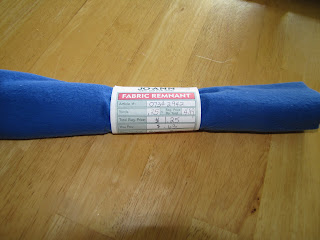Let's look at Nature Valley's 100% Natural Chewy Trail Mix - Fruit & Nut bars.
Ingredients: whole grain oats, high maltose corn syrup, rice flour, raisins, almonds, honey, sugar, roasted peanuts, fructose, sunflower seeds, canola oil, cranberries, maltodextrin, soy lecithin, salt, malt extract, baking soda, natural flavor, and mixed tocopherols.That's EIGHT different sugars in one little granola bar. Yikes!
What about something that is considered a little more healthy - Kashi's TLC Chewy Granola Bars Honey Almond Flax?
Ingredients: rolled grain blend (hard red wheat, oats, rye, triticale, barley), roasted salted whole almonds, brown rice syrup, soy protein isolate, soy grits, evaporated cane juice crystals, chicory root fiber, whole flax seeds, evaporated cane juice syrup, rice starch, corn flour, honey, expeller pressed canola oil, vegetable glycerin, oat fiber, natural flavors, evaporated salt, Kashi seven whole grains sesame flour (whole: oats, hard red wheat, rye, brown rice, triticale, barley, buckwheat, sesame seeds), molasses, soy lecithin, peanut flour, whey protein isolate.
Only FIVE sugars in this one.
But the sugars aren't the only unhealthy thing about these "healthy" snacks. They both use genetically modified ingredients, canola oil (at least Kashi's is expeller pressed), and those mysterious "natural flavors" that could include just about anything.
Your best bet is to make your own granola bars. I found a wonderful recipe here that I decided to modify using soaked grains and nuts. Remember that it is always important to soak your grains, nuts, legumes and beans before consuming them!
Here is how I made my chewy granola bars. To make my recipe you will need a dehydrator. I will also warn you that I didn't measure anything - you can't really mess this up, so just use as much as you want of each ingredient.
Step 1: Soak some organic oats, raw almonds, and raw sunflower seeds for 12-24 hours. The longer you soak, the better.
Step 2: Drain and rinse your ingredients and then dehydrate them for a while. I did it until the oats were half dry.
Step 3: Pulse your almonds in the food processor.
Step 4: Toss your oats, almonds, and seeds into a large mixing bowl. Add your dried fruit - I used raisins and chopped dried figs. Add your sweetener - I used raw, local honey.
Add your fat - I used coconut oil so that my dairy-allergic son can eat them, but butter would also taste great. Add anything else you want - I used cinnamon and flax meal.
Step 5: Mix. Skip the spoon and just use your hands - it's much easier.
Step 6: Put some wax paper on a flat surface and plop your ingredients on top.
Step 7: Put another piece of wax paper over your ingredients and roll them until they are the desired thickness. I like mine thicker. Just remember that the thicker they are, the longer they will take to dehydrate.
Step 8: Peel off your top layer of paper and cut your bars with a pizza cutter.
Step 9: Transfer your bars to the dehydrator and turn it on until they dry. It took my really thick bars about 6 hours to completely dry today.
Step 10: Enjoy!
Here is a picture of one of the thin ones for the children and the big, thick, Mommy-sized bars :)
It's as easy as that - a fresh, healthy snack for your family without all of the nasty additives, preservatives and sugars.
-Jess























